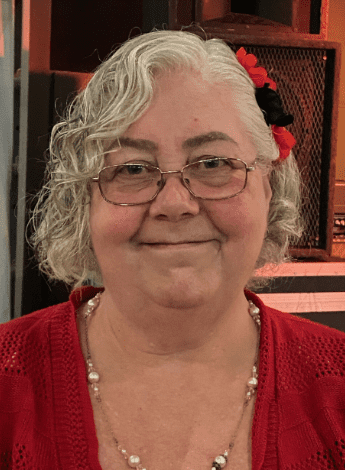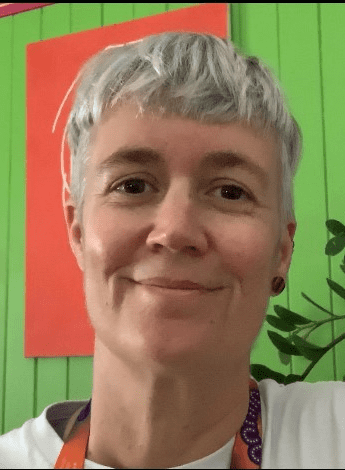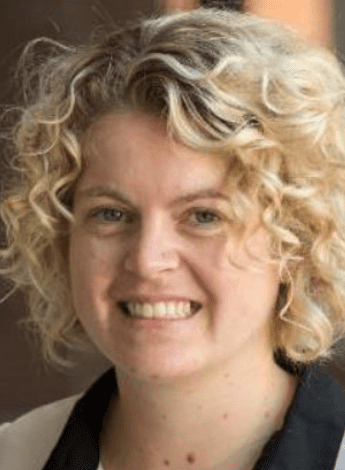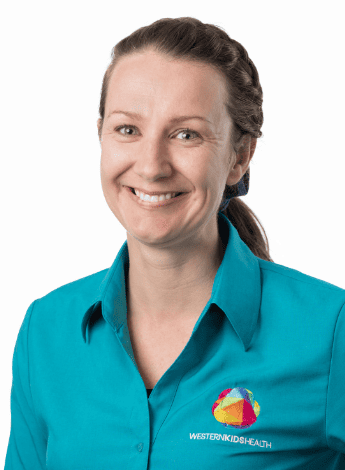
Beyond stigma: shaping care for larger patients

Communication is key to getting the best out of the professional relationship when treating larger patients. But what to say and how to say it can be something of a minefield when treating adults and children in bigger bodies. We explore why language matters in the care of larger patients, offering insights into how physiotherapists can cultivate treatment that is both effective and empathetic.
Language is a powerful tool in healthcare, capable of fostering trust, understanding and collaboration between clinicians and
patients.
For physiotherapists, the words they choose can have profound effects on a patient’s wellbeing and recovery.
This is particularly true when working with larger patients, where the language used can either support their journey toward health or inadvertently cause harm.
In a clinical setting, poorly chosen words can trigger feelings of shame, embarrassment and anxiety, which may deter patients from seeking the care they need or diminish their engagement in treatment.
This can lead to missed opportunities for effective intervention and long-term health benefits.
On the other hand, thoughtful and supportive language can empower larger patients, helping them to feel respected, understood and motivated to actively participate in their own care.
The significance of language in physiotherapy goes beyond the treatment room; it reflects broader societal attitudes toward weight and health.
By being mindful of language, physiotherapists not only enhance their patients’ immediate experience but also contribute
to a more inclusive and compassionate healthcare environment.
Stigma surrounding larger bodies can prevent patients from seeking physiotherapy due to fear of judgement, discrimination or their concerns not being taken seriously, leading to delayed care and potential worsening of their condition.
To address this, physiotherapists can create an inclusive and welcoming environment by using non-judgemental language, focusing on the patient’s goals rather than weight and emphasising health and function over appearance.
Ongoing education on the impact of weight stigma and training in sensitive communication can also help practitioners to better support larger patients.
Nadia Walton APAM, the director of a private practice in inner Melbourne that specifically caters to larger patients, Laneways Rehabilitation and Ergonomics, believes that physiotherapists should offer equal care to all patients, regardless of their size.
That care should also be mindful of language and the impact that terms such as ‘obesity’ can have on a larger or plus-size patient.
‘Obesity is a medical word. Outside of medical terminology it is best to refer to bigger patients as being plus-size or larger.
'The comparison being smaller or straight-sized. We don’t talk about normal or average because what is considered “normal”?
'Any time I use the word obesity, I try to express the disclaimer, saying, “This is a medical word and I recognise that it can cause hurt to people,”’ Nadia says.
A collective approach
Having previously worked at the Alfred Hospital, supporting the care of larger patients across the health service, before moving into the private practice space in October 2023 to help larger patients outside of the public health system, Nadia continues to consult to public, private, aged and disability health services, providing support to develop care plans for individuals in larger bodies and helping to build service capacity.
She says it is important to note that physiotherapists treating larger patients should work as part of a multidisciplinary team or have the ability to refer to additional health services.
Managing the complex needs associated with larger body sizes often requires a holistic approach, she says.

Nadia Walton.
Larger patients may experience a range of health challenges including cardiovascular issues, metabolic disorders and mental health concerns that are beyond the scope of physiotherapy alone.
When needed, collaborating with dietitians, psychologists, exercise physiologists and other specialists ensures that the patient receives comprehensive care that addresses all aspects of their health.
This team-based approach enhances the effectiveness of treatment, improves patient outcomes and provides patient-centred care that is tailored to the individual’s unique needs.
‘All practitioners should aim to build good clinical relationships that allow for gentle and kind discussions about the risks of excess weight and should have the knowledge to refer larger patients to other services for weight loss,’ Nadia says.
‘It is also important that clinicians respect a patient’s choice not to engage in weight loss efforts and continue to provide respectful care without fixating on the notion that the patient’s excess weight is the sole reason for their lack of improvement, if this occurs.
‘Obesity is the clinical condition. So we talk about complications rather than comorbidities, complications that we think are linked to being plus-size.
'We know that if you carry excessive kilos for a long time, you’re likely to have biomechanical issues. You’re more likely to have some sort of inflammatory issues. There’s a pattern. And I think we shouldn’t shy away from discussing that.
‘Larger patients come with a lot of life complexities, especially with a chronic condition that’s so visible and that comes with so much stigma.
'This group has vastly inequitable care because of how society tends to view them.
'So it is important for me to engage with larger patients and show that I’m an ally—that I’m not there to judge. That is really critical.’
Call for collaborative action
According to the National Obesity Strategy 2022–2032, unconscious or intentional weight bias and obesity stigma result in people being treated differently or unfairly because of their weight. This can make people feel marginalised.
Citing the World Health Organization’s 2017 report Weight bias and obesity stigma: considerations for the WHO European Region, the obesity strategy found that weight bias is pervasive in society—in the community, at work, at school and when accessing healthcare.
‘Weight bias and stereotyping can portray people living with obesity as lacking will power and can overemphasise personal responsibility.
'However obesity is a complex issue; biology (including genetics), early life experiences, psychology and our environment
which promotes unhealthy lifestyles all play a part.
'Furthermore, it is very difficult to lose weight and keep it off once obesity is established.
'Acting on obesity and reducing weight stigma is a collective responsibility,’ the report stated.
‘As a society, we must tackle the issue and have respectful and positive discussions about weight.
'It is time to shift away from blaming individuals and to turn our attention to strategies that address the broader causes of obesity in our society.’
A lived experience
Society’s views about what is considered the ideal body weight have had a direct impact on Lyn Keppler (below right).

Lyn Keppler.
The 65-year-old Weight Issues Network board member and First Nations woman says she has felt ‘obese for most of my life’ and has felt judged by the community and health practitioners alike.
Poor communication, discrimination and having consultations with practitioners ill prepared to cater for a larger body have peppered many of Lyn’s interactions with healthcare professionals across public and private settings (see Lynn's story below).
Larger patients often face significant barriers when seeking treatment from physiotherapists and other health professionals, stemming from biases and from within the healthcare system itself.
Larger patients may also avoid seeking treatment due to previous negative experiences such as being dismissed or shamed for their weight.
Avoidance can lead to a delayed diagnosis, untreated conditions and worsened health outcomes.
Lyn says that words can have a big impact on how larger patients view their interactions with healthcare professionals; ill-chosen language can be harmful and create barriers to continuity of care, while positive and respectful language can work to remove many barriers and lead to better and more effective patient care.
When patients perceive that they have been stigmatised, they experience negative psychological and physical health outcomes.
Building trust through care
Some healthcare providers may be influenced by weight stigma when treating patients.
An assumption that larger patients are solely responsible for their health conditions can result in a lack of empathy, reduced quality of care and a focus on weight rather than on addressing the patient’s primary concerns.
For physiotherapists, overcoming barriers to treating larger patients can include looking at alternatives to standard equipment in the clinical setting as well as adapting the physical environment of the clinic to cater to bigger bodies.
Similarly, practitioners need to take into account the unique anatomical and physiological considerations of larger patients.
This requires a deep understanding of the complexities involved in treating larger patients as well as a commitment to ongoing education and training to ensure that treatment approaches are safe and effective.
Treating patients with bigger bodies affords practitioners the opportunity to reflect on their own clinical approach and the way they communicate with patients in an effort to eradicate perceived stigmatisation.
Examining attitudes
It has been almost 10 years since physiotherapist-researcher Dr Jenny Setchell APAM (below left) began writing papers on the stigmas displayed by health professionals when treating patients but their insights and findings remain as relevant today.
When Jenny first started researching weight stigma among physiotherapists, little had been published in this area.
Since then, Jenny has authored upwards of eight papers on the subject, including their PhD (investigating weight stigma in health).
Their work continues to be cited and their presentations sought after at conferences around the world.

Jenny Setchell.
‘When I spoke with other physiotherapists, it seemed they hadn’t really thought about weight as much compared to other forms of stigma and discrimination, including sexism or racism.
'As such, I thought it may be worth investigating further because it was something that seemed to be happening more and more and that disturbed me,’ Jenny says.
Another driver for Jenny’s research was the scarcity of work focusing on the physiotherapy profession’s intersection with weight stigma—a finding that sits in stark contrast to the number of studies around the world exploring the prevalence of weight stigma in healthcare more broadly.
Discussing their research recently, Jenny, the senior researcher (qualitative) at the Institute for Urban Indigenous Health, says they looked at some of the norms in physiotherapy as a profession and at how those might affect how physiotherapists think as professionals but also how patients might feel coming to physiotherapists for treatment.
A surprising discovery during the course of the research was that physiotherapists and health practitioners were well intended and wanted to do the right thing but could also be myopic in recognising the ways they might inadvertently contribute to weight stigmatisation.
‘The image we project to the world is of this kind of sports-focused, physical-activity-loving, thinking-that’s-the-cure-to-everything profession and people might come along and think “I’m going to be judged here.
'These aren’t the people I’m going to talk to about my body size and these aren’t the people that I want to undress in front of and have them look at my knee” or whatever it is they are seeking treatment for,’ Jenny says.
‘A participant in one of my studies—a lovely physio— said that it’s not enough to feel right in yourself about something.
'You need to proactively make an environment good for people.
'He was talking about how he didn’t feel that he was stigmatising people’s body size.
'But he realised that people might think he is judging them and so he would actively do things to help them feel comfortable.’
Lyn’s story
If there is anything Lyn Keppler would change about her interactions with physiotherapists and allied health practitioners, it is their understanding of how larger bodies react differently from thinner bodies to exercise and movement.
As a 65-year-old woman with a lived experience of obesity, Lyn has found that few practitioners understand that exercise prescription is not ‘one size fits all’.
‘Some physios don’t seem to comprehend that there are certain things we can’t do because of our size,’ Lyn says.
‘Their knowledge of dealing with the larger body is limited.
'They’ve learnt what everything is—what different things do as far as human bodies go—but they haven’t been able to relate it to a larger body, which can react differently.’
Lyn says she has seen many practitioners focus on a physiological complaint in isolation rather than taking other factors, such as her weight, into account. Others have avoided discussing her weight at all.
Both approaches have left Lyn feeling that the practitioner is not invested in her care.
‘A lot of people with weight on have their own barriers and they put up walls.
'The physio or health worker has got to be able to understand that and try to break down those walls—find a way to help.
'I think the training at uni doesn’t really cover that,’ Lyn says.
Having experienced obesity for most of her life, Lyn has undergone two bariatric surgeries.
The first, in 1985, worked successfully for 15 years until it was discovered that she had developed a fistula.
Lyn’s weight had reached 150 kilograms before she went in for the second surgery in 2017.
She had physiotherapy both before and after the second surgery, the latter offered as part of a publicly funded multidisciplinary metabolic program.
In 2020, Lyn was treated for mild cord compression of C5–C6 after a chair collapsed underneath her.
She spent 24 hours in hospital and experiences ongoing pain.
She sought help from a physiotherapist who didn’t have the right equipment to cater to patients in a larger body.
In the metabolic program, however, Lyn found that her physiotherapy and other medical care was designed to cater to bigger patients. And her programs were tailored to her specific needs.
An Indigenous woman and a retired maths teacher, Lyn is on the advisory board of the Weight Issues Network and understands well the many barriers that people in larger bodies face when seeking medical help.
‘I know a lot of people who have mental health issues because of their size. I don’t because I’ve learnt to deal with everything as it comes,’ Lyn says.
‘I’m vocal; if I don’t agree with something, I will tell them.
'I’ve developed neuropathy in both legs and both arms and my GP didn’t acknowledge that I had neuropathy until I demanded a second appointment. Now she’s working with us.
'So it’s just things like that. I had to stand my ground and be forceful. But not everyone is able to stand up for themselves.’
Childhood obesity
Overweight and obesity affects around 25 per cent of children and adolescents in Australia.

Dr Margarita Tsiros.
According to the Australian Institute of Health and Welfare, there are certain demographic factors that make people more likely to experience overweight or obesity, such as being Aboriginal and/or Torres Strait Islander, living with a disability and living in inner regional or the lowest socio-economic areas.
For more than a decade, overweight and obesity has been a research focus for Dr Margarita Tsiros APAM (right), a senior lecturer in physiotherapy at the University of South Australia.
‘A lot of my research has looked at how physical functioning and wellbeing can be affected by childhood overweight and obesity as well as other aspects such as pain, balance, strength and fitness,’ says Margarita.
‘With overweight and obesity in children and adolescents, there’s evidence of functional strength deficits in the lower limbs, reduced functional fitness relative to body mass, increased musculoskeletal pain and reduced motor skill proficiency in running, jumping and hopping, for example.
'There is also emerging evidence of a higher risk of injury in youth living with overweight or obesity.
‘Physios have a key role in helping to improve people’s function and movement in terms of adapted and scaffolded physical activity.
'It’s about making gradual changes, setting clients up in a way that makes sure that they experience success, avoiding a cycle of negative engagement with movement and physical activity.’
Research is constantly being updated, not only on the impacts of obesity but also on its causes.
Margarita says, ‘It’s critical to understand that while lifestyle behaviours such as diet, activity and sleep are important, obesity is a chronic condition that could be influenced by genetic factors and early life programming.
'Plus, we live in an obesogenic society that is geared towards weight gain. There are many factors outside of an individual’s control.’
One of those factors could be the built environment in which a child lives, which was the PhD topic and is now the continued research interest of Dr Jane Jacobs (below), a researcher in the School of Health and Social Development at Deakin University.

Dr Jane Jacobs.
‘I’ve looked at the opportunities children actually have to be physically active,’ says Jane.
‘We can tell kids and parents as much as we want that they should be physically active but if the resources aren’t there, that’s a huge barrier.
'And in terms of food—where it is, what’s available—plus a reliance on motor transport and increasing time spent in sedentary behaviour with screens, all of those things are working against us.
‘One of my projects looked at primary schools across Australia and at the physical activity environments around them: parks, outside resources and walkability.
'We found that resources were a lot more available in higher socio-economic and metropolitan areas than in low socio-economic or rural/remote areas.
'While we don’t have consistent evidence linking those environments to weight status, we know that children living outside of major cities and in lower socio-economic areas are more likely to have obesity, as their environments are really set up for unhealthy behaviours.’
The policy environment also plays a significant part, according to Jane.
‘Policies such as food labelling and sugar taxes can have a filter-down effect on what parents buy at the supermarket and what children eat.
'Plus the stigma of obesity can be a big barrier in terms of accessing healthcare.’
The role of physiotherapy when it comes to overweight and obesity is therefore to focus on movement and participation, according to Dr Grace O’Malley (right), a researcher at the Royal College of Surgeons in Ireland who collaborated with Margarita on a 2021 research paper on neuromusculoskeletal health in paediatric obesity.

Dr Grace O'Malley.
‘Physio is so important in obesity because it helps you wear a rehabilitation hat,’ says Grace.
‘So it doesn’t matter if someone has had a stroke or a fracture or they have a chronic condition.
'Our job is to empower movement and to facilitate people doing what they need to do for independence regardless of what their condition is.’
Grace and her team are developing a training package to help clinicians work more effectively with children with obesity in collaboration with Professor Louise Baur from the University of Sydney and the Children’s Hospital at Westmead.
She says, ‘The ultimate goal is to improve children’s health outcomes.
'Many health professionals go through their degrees and end up with zero training on obesity.
'They’re taught about the environmental aspects and the health promotion angle—which are important things to know about—but they need more of a grounding in the science of obesity and in understanding how to work with families.’
A fair amount of stigma is still associated with being overweight and children are not spared.
‘It was shocking to hear the way even some of my colleagues spoke about these children over the years,’ says Grace.

Nicole Pates.
‘I think anybody should be able to feel good about themselves and have self-worth and self-esteem regardless of what their health status, shape or size are.’
At a clinical level, many services are now oriented towards a multidisciplinary approach incorporating fields such as physiotherapy, dietetics and psychology to help manage weight and facilitate movement.
One such service is Western Kids Health in Perth, run by APA Paediatric Physiotherapist Nicole Pates MACP (above).
‘As physios, it’s essential that we position ourselves as allies in the health and well-being of children we work with, and the language we use plays a pivotal role.
'When a child presents with musculoskeletal pain, framing our questions around activity levels or adherence to physical activity guidelines can come across as clinical jargon and may lack relevance for the child.

Alyse Kendall.
'For those with weight concerns, such inquiries can inadvertently lead to feelings of guilt or shame.
'Instead, we can foster a more supportive environment by asking, ”How do you enjoy moving your body? What do you find tricky about moving your body?”
'This encourages children to take the lead in the conversation, allowing us to understand their perspective and build trust and rapport.
‘Confidence and a willingness to participate are crucial, especially for children dealing with overweight or obesity,’ explains Alyse Kendall, who leads the Helpful Habits program at Western Kids Health.
‘Many of these kids have become withdrawn and demoralised by their health journey, making engagement in physical activity a significant achievement, particularly during the challenges of puberty.
'So how can we support them in achieving functional goals? And if they’re not meeting expected milestones, what other factors might be at play?’
Nicole adds, ‘Focusing solely on weight in children can be counterproductive, especially considering their growth and development.
'As physios, we need to be mindful that kids are in the process of developing their self-identity and self-worth.
'We should foster an environment that encourages engagement, confidence and skill development rather than focusing on aspects that are harder to change, like weight, which we don’t use as a goal.
'Regardless of the reason a child is seeing you, weight should not dominate the conversation.
'Our role is to support them in engaging, participating, and cultivating a healthy relationship with movement.’
Language helps shape care
Using positive and respectful language is crucial for physiotherapists when treating larger patients.
Here is some practical advice for language that is supportive and non-stigmatising and empowers patients to focus on their health.
• Focus on function: emphasise functional goals such as improving mobility or reducing pain rather than discussing weight or appearance.
• Be sensitive to language: use phrases such as ‘challenges associated with weight’ instead of ‘weight problem’ to avoid implying that the patient is at fault.
• Respect patient preferences: ask patients how they prefer to describe their body and condition and use their preferred language throughout the treatment.
• Avoid assumptions: do not assume that health issues are solely due to weight. Address each patient’s individual circumstances without making weight the focus.
• Emphasise health: frame conversations around overall health improvements such as increased strength or endurance rather than weight loss.
• Use supportive words: use encouraging, supportive language that focuses on a patient’s progress and capabilities rather than limitations or deficits.
© Copyright 2025 by Australian Physiotherapy Association. All rights reserved.





